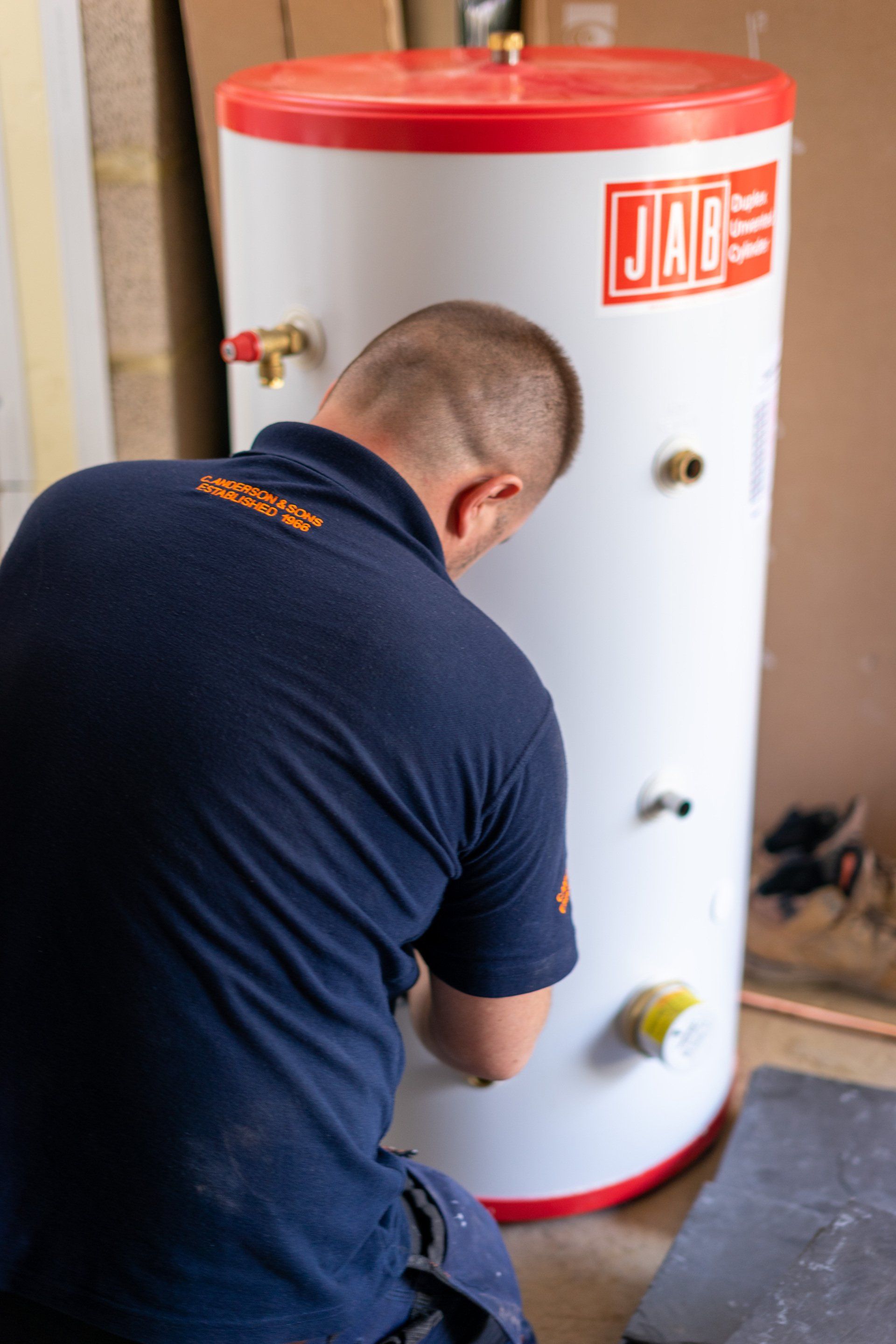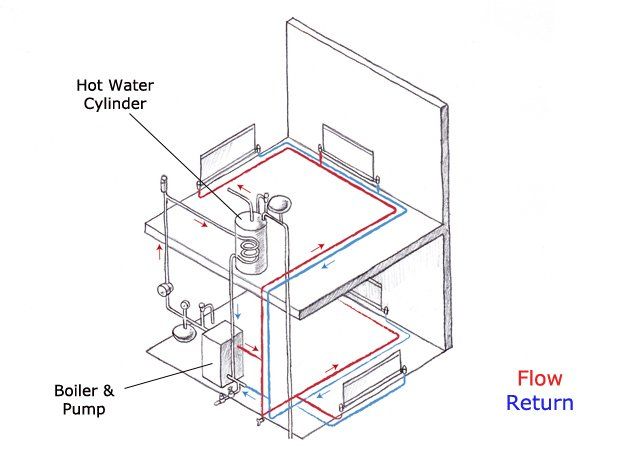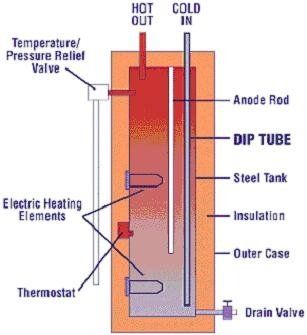Hot Water Cylinders: a Beginner's Guide
Beginner's guide to hot water cylinders
What is a hot water cylinder?
A hot water cylinder (sometimes referred to as an immersion tank) is essentially a tank that supplies hot water on demand to a household.
They are ideal for properties that have 2 or more bathrooms, where the demand for hot water would be more than a combination boiler can provide.
What’s the difference between a vented and unvented hot water cylinder?
Vented types are traditional copper cylinders that are gravity fed from a cold water tank. They often use a pump to help increase the flow of water. The old cylinders had a jacket. Modern cylinders have foam insulation.
Unvented types which are fed from the mains water supply, are more common these days, but need a discharge pipe from the cylinder to run outside. (Megoflo, Santon, JAB, and Ariston are established unvented cylinder brands)
How does a hot water cylinder work?
Water is heated by an immersion heater; a metal element or coil fitted within the cylinder, much like some kettles. This type is often referred to as a direct hot water cylinder.
An indirect cylinder has a primary external heating source such as a traditional central heating boiler or a solar thermal system, but often with an immersion heater as a backup when the external energy source is unavailable.
What are the pros and cons of having a hot water cylinder?
The main benefit is that they can supply more hot water quicker than a combination boiler.
However, they do take up more space than a typical combi boiler.
What size hot water cylinder would I need for a house with 1, 2, 3 or 4 bedrooms?
The question is not how many bedrooms, but how many bathrooms!
For a 1 bathroom house, a combination boiler would meet the hot water needs for a household.
For a 2-3 bathroom house you would typically need a 210 litre cylinder.
For a house with 4+ bathrooms you’d typically need 250 - 400 litre cylinder, depending on the demand for hot water.
What sort of things can go wrong with them?
They can leak, but scale reducers and limescale inhibitors can protect plumbing systems against the damage caused by hard water and limescale. This includes vented and unvented systems.
How can I repressurise my hot water cylinder?
Megoflo unvented cylinders need their air gap to be re-established from time to time. It is advised that this is completed by an experienced plumber during regular servicing, which is recommended every 12 months
How can I drain my hot water cylinder?
Isolate the water supply to it by closing off the cold tap. Open the drain off and use a hose to drain the cylinder.
What should I do if my hot water cylinder gets a leak?
Call the experts! Isolate the water to the property in the meantime until the plumber arrives.
How often should I get my hot water cylinder serviced?
All HWC manufacturers recommend getting your cylinder (and boiler) serviced every 12 months.
Who makes hot water cylinders?
Megaflo are the most well known, but JAB & Santon also offer 25 year warranty on the stores (controls not included).
Thinking about installing a hot water cylinder for your home?
Our new unvented cylinders come with a 25 year warranty for the hot water store. We also have lots of experience in resolving poor water pressure and will always give best advice regarding choosing a cylinder whether vented or unvented, or alternatively just a powerful combination boiler.
Call today on 0207 386 8888 for a free estimate, or via our booking form here.
You might also like
Our Blog








